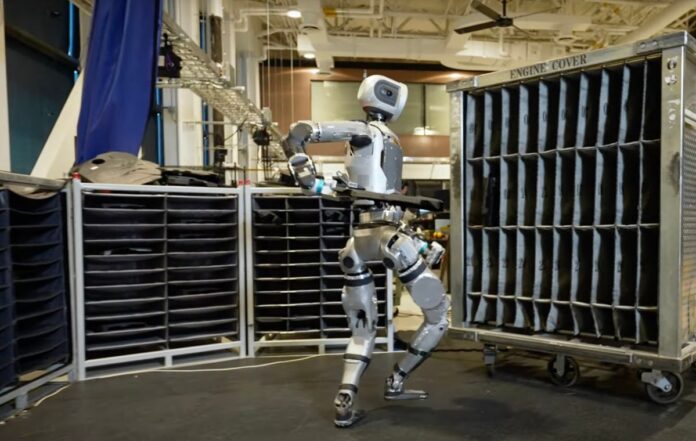Boston Dynamics Wednesday announced a partnership designed to bring improved reinforcement learning to its electric Atlas humanoid robot. The tie-up is with the Robotics & AI Institute (RAI Institute), earlier known as The Boston Dynamics AI Institute.
Both organizations were founded by Marc Raibert, a former MIT professor who served as Boston Dynamics’ CEO for 30 years. The Institute, founded in 2022, allows Raibert to continue the research that served as the foundation for Boston Dynamics.
Both have ties to Hyundai. The Korean carmaker acquired Boston Dynamics back in 2021; Hyundai also funds the Institute, giving Raibert free rein to explore more experimental and bleeding-edge technologies than is possible in a commercial company. The Institute mirrors Toyota’s creation of TRI, for Toyota Research Institute, which announced its own partnership with Boston Dynamics in October, focused on the use of large behavior models. (LBMs).
The twin partnerships are designed to improve the way Boston Dynamics’ electric Atlas humanoid learns new tasks. The Robotics & AI Institute deal is specifically focused on reinforcement learning, a method that operates through trial and error, similar to the way both humans and animals learn. Reinforcement learning has traditionally been extremely time intensive, though the creation of effective simulation has allowed many processes to be carried out at once in a virtual setting.
The Boston Dynamics/RAI Institute union kicked off earlier this month in Massachusetts. It’s the latest in a number of collaborations between the pair, including a joint effort to develop a reinforcement learning research kit for the quadrupedal Spot robot by Boston Dynamics (which is its familiar robot “dog”). The new work focuses on both transferring simulation-based learning to real world settings and improving how the company’s humanoid Atlas moves through and interacts with physical environments.
Pertaining to the latter, Boston Dynamics points to “dynamic running and full-body manipulation of heavy objects.” Both are examples of actions that require synchronization of the legs and arms. The humanoid’s bipedal form factor presents a number of unique challenges – and opportunities – when compared with Spot. Every activity is also subject to a broad range of forces, including balance, force, resistance, and motion.
Bigger picture, Raibert notes in a statement, “Our aim at RAI is to develop technology that enables future generations of intelligent machines. Working on Atlas with Boston Dynamics enables us to make advances in reinforcement learning on arguably the most sophisticated humanoid robot available. This work will play a crucial role in advancing the capabilities of humanoids not only by expanding its skillset, but also streamlining the process to achieve new skills.”
News of the partnership arrives a day after Figure AI founder and CEO Brett Adcock announced that the Bay Area company is abandoning a partnership with OpenAI in favor of developing its own in-house models.
“We found that to solve embodied AI at scale in the real world, you have to vertically integrate robot AI,” the executive told TechCrunch. “We can’t outsource AI for the same reason we can’t outsource our hardware.”
Figure determined that the best AI models for its humanoid are those that are developed specifically for its robots, in-house. OpenAI’s approach to embodied intelligence – meaningAI in a physical form – has understandably been less focused given the ChatGPT maker’s size and scope. That news also arrived on the heels of rumors that OpenAI has been exploring the creation of its own humanoid robots.
Most companies involved in humanoid space are working on their own bespoke AI models. That certainly applies to Boston Dynamics, which has decades of experience developing software to run on its own unique robotics systems. While the RAI Institute is technically a separate organization, both share a parent company, founder, and, presumably, common goals.




